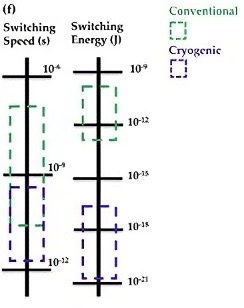A Cryogenic Artificial Synapse Based on a Superconducting Memristor
The Problem
Neuromorphic computing systems have emerged as a solution to the architectural challenges surrounding continued miniaturization of transistors, though most such systems fail to substantially match the energy efficiency and compactness of the human brain or the biological behaviors of plasticity and reconfigurability which neurons possess.
The Solution
Researchers at the University of Tennessee have developed a synapse topology utilizing superconducting elements, conductance asymmetric superconducting quantum interference (CA-SQUID) based artificial neurons, and a cryogenic architecture to achieve low energy consumption, enhanced reconfigurability, and synaptic weight programming all more effectively than existing superconducting synapse structures using fixed resistors and inductors.

Benefits
| Benefit |
|---|
| 8 different non-volatile levels of synaptic strength created from a combination of 3 superconducting memristors. |
| Cryogenic hardware offers exceptional energy efficiency and speed. |
| Estimated programming power of 8.5 pW. |
| Non-volatile synapse-structure offers ultra-low energy consumption on the order of 10 aJ per spiking event. |
More Information
- Gregory Sechrist
- Technology Manager
- 865-974-1882 | gsechris@tennessee.edu
- UTRF Reference ID: 23134
- Patent Status: Patent Pending

Innovators
Ahmedullah Aziz

Assistant Professor, Department of Electrical Engineering and Computer Science, UT Knoxville
Dr. Ahmedullah Aziz explores device-circuit-system co-design techniques with an emphasis on emerging technologies. He has received multiple awards and accolades for his research and has published over 80 scientific articles in this space.
Read more about Ahmedullah AzizMd Mazharul Islam

Graduate Student, Department of Electrical Engineering and Computer Science, UT Knoxville
Md Mazharul Islam is a Ph.D. student with research interest in emerging memory devices, Beyond CMOS technologies, and neuromorphic hardware.
Read more about Md Mazharul Islam